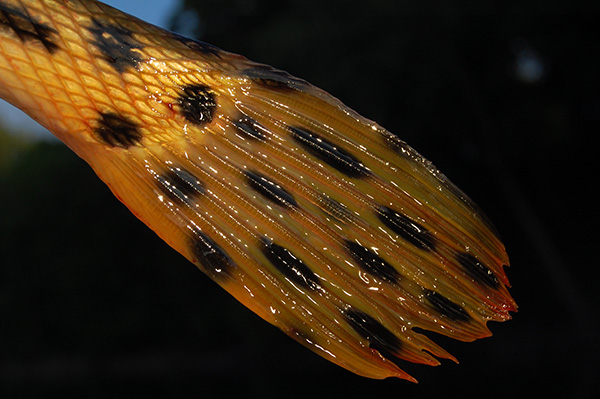Now offering lodging options! |
Get those spring steelhead trips booked! |
Give the gift of fishing with a gift certificate.


The Fish We Guide
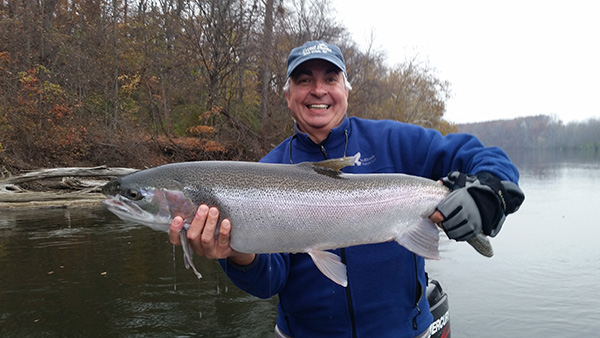
We are lucky enough to have a number of top-notch steelhead rivers that we call home. With these rivers to fish we can fish steelhead nearly 365 days a year.
The St. Joe is one of America’s finest steelhead rivers. Beginning in March, steelhead start their annual spawning run. During prime spawning time, mid-March to late April, sight fishing can yield hookups of many 8-12 pound fish per day. Without question, the St. Joe gets the best summer run of any river in the Great Lakes region. Beginning in June, the Skamania strain steelhead begin their run. When hooked, these fish spend more time out of the water than in it. The Skamania’s quick runs will test even the best reels. The fall migration begins in October on the heels of the salmon run. By November, the steelhead fishing is top-notch. These fish are fresh from Lake Michigan and eager to take a fly. As fall turns to winter and anglers get cabin fever, there is no better reason to get out of the house than to chase steelhead.
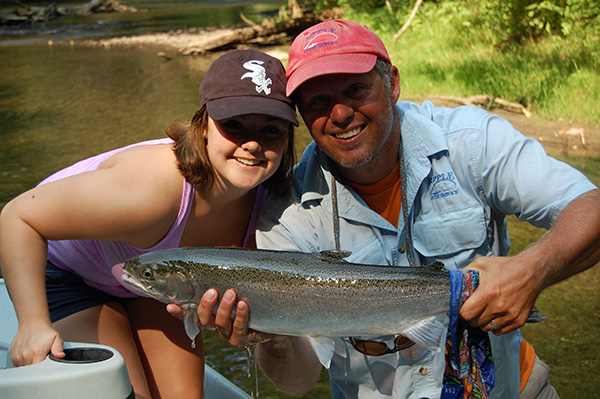
The Dowagiac is a major tributary of the St. Joe and is also one of the prettiest rivers in Michigan. The Dowagiac differs in a few ways from the St. Joe. The Dowagiac is small water compared to the Joe which is one of the largest rivers around and it also supports a decent amount of natural reproduction. The summer run steelhead can also be fished all summer long on the Dowagiac because it stays much colder than the St. Joe. For the wading angler the Dowagiac is a little piece of Heaven.

Salmon season on the St. Joe starts in September when the bright 5-10 pound Coho enter the river. The Coho, chasing brightly-colored streamers through the cool waters of fall, are some of the most aggressive fish anglers see all year. Later in the month, the Chinook, the true kings of the river, begin their annual spawning run and can exceed 25 pounds.
As the cool air of October moves into the Great Lakes region, the salmon follow. The first few weeks of October can provide the angler with a trip never to be forgotten. The kings weigh in at 15-22 pounds and are pure muscle. There is not a better big fish trip anywhere in the lower forty-eight! With the banks of the river ablaze with turning leaves, anglers book these special trips far in advance.
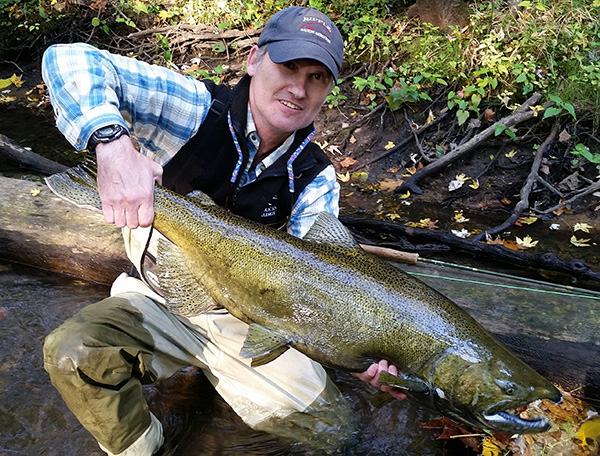
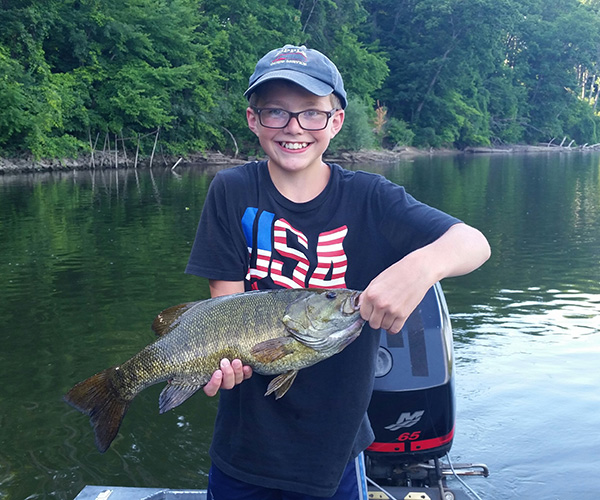
During the heat of the summer, there is no fish more enjoyable than smallmouth. Grab a five-weight and floating line, kick off your shoes, and relax because smallmouth fishing is about as good as it gets. These feisty bronzebacks will eat anything from crawdad imitations to poppers. The smallmouth fishing is at its best between May and September. The St. Joe offers some great smallmouth fishing in big water. Most of the fishing on the Joe is done from a boat, but for the person that wants to wade it is always an option. Casting streamers against the banks and setting the hook on too many fish to count is a great way to spend the day. The Yellow is prime water for the angler that is looking for a small water trip. This stream is teeming with smallies and the opportunity for a trophy is a real possibility. The Yellow is a very secluded river where seeing another angler is a rarity.
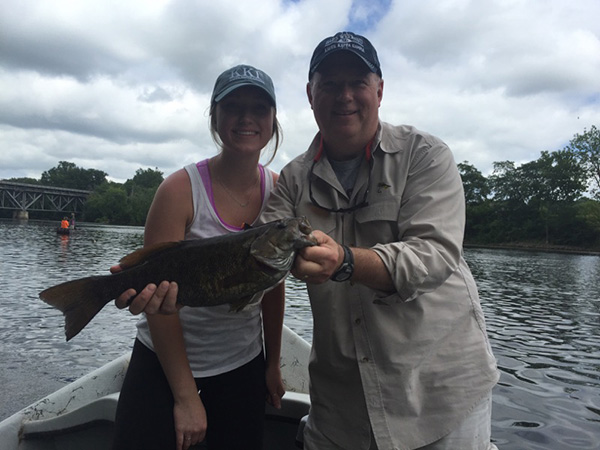
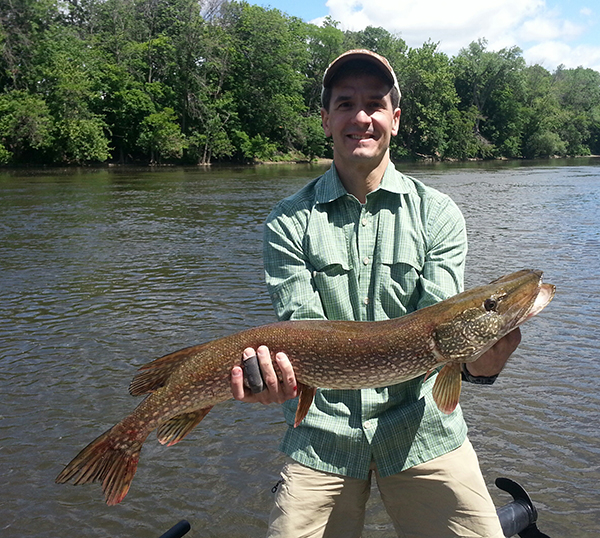
Our Pike fishing is done on the Yellow and Tippecanoe Rivers. Both rivers are located in northern Indiana, are relatively small, and support a good number of large pike. The Yellow is one of the best pike fisheries in the area and is also filled with smallmouth. Pike fishing is best done from a boat which allows us to cover a lot of water in a day. Casting large streamers or conventional lures is the recipe for success. The pike average 30 inches and fish over 36 inches come along often throughout the year. Watching a ten-pound pike chase down its prey in small water and smashing it just feet from the boat is about as exciting as fishing can get.
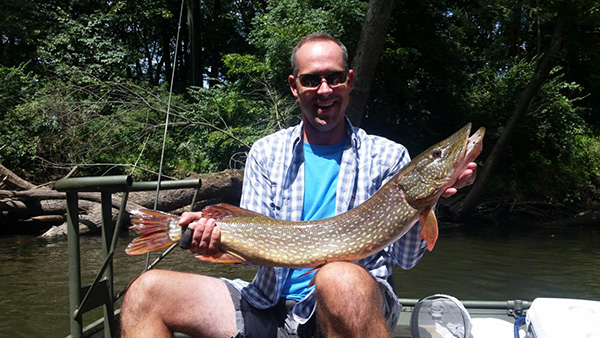
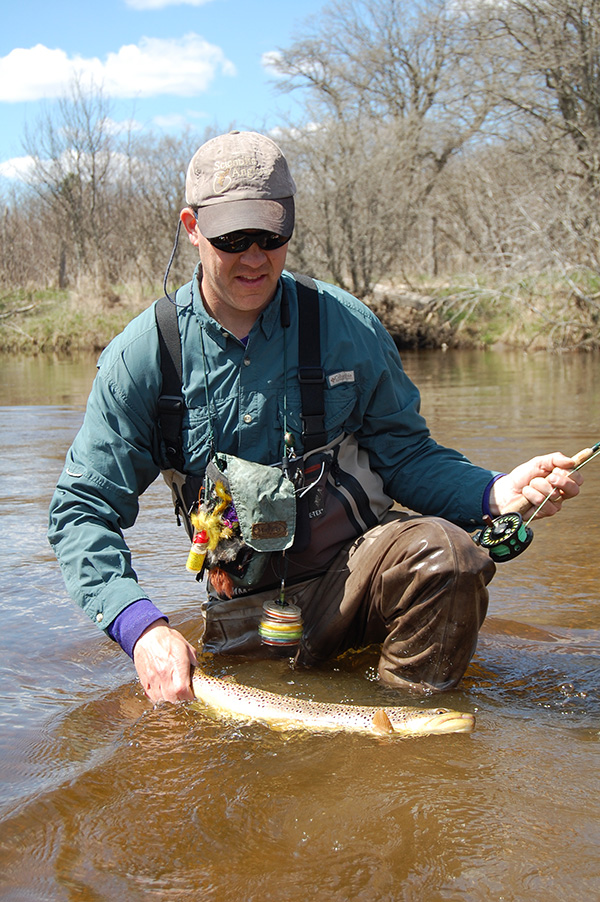
We offer trout trips on many small streams from northern Indiana to central Michigan. Many of these trips are walk and wade although a few streams can be floated. The trout fishing is year round, but the fishing really picks up in April when the streamer fishing can be out of this world. By mid-May the hatches kick in and the dry fly fishing is great to say the least. One of these streams consistently turns out twenty-inch fish on dries all summer long and the possibility of a true monster on a dry is a real possibility. Some of the most exciting fishing of the year happens from mid-May to mid-June when the drakes and hexes are hatching in clouds. These secluded streams rarely disappoint, so if you are tired of fighting the crowds think about giving one of these trips a try.
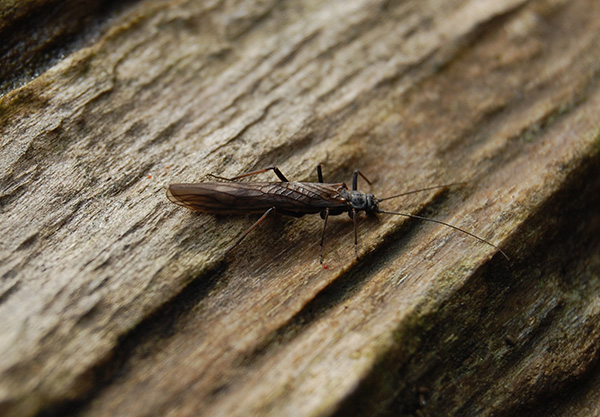

Gar are a new target to most fly fishermen. These fish are very aggressive and when “hooked” can be very aerial fighters. They are found in great numbers on the St. Joe during the summer months. Typically we are sight fishing for these ancient fish and casting to very large pods. These fish average thirty inches and can be brought to the net in large numbers some days. Gar make a great addition to our smallmouth trips or by themselves. A seven or eight weight rod is preferred as these fish can exceed fifty inches.
